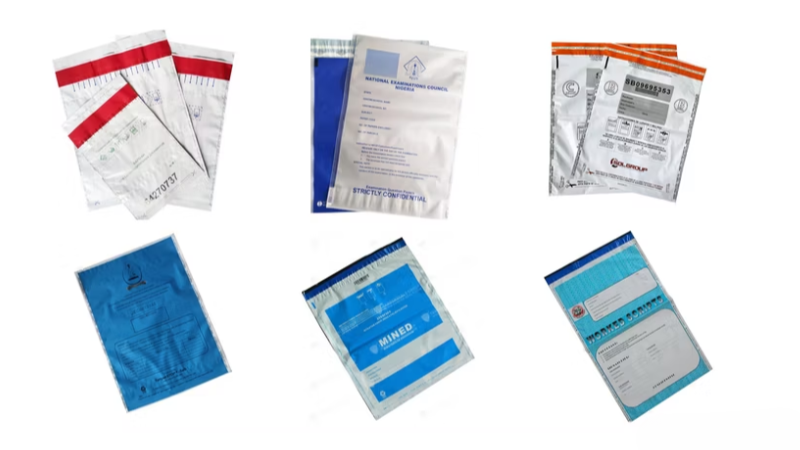Package theft isn’t just a minor issue anymore – it’s costing people real money. According to Security.org‘s annual report, nearly $3 billion in e-commerce merchandise was stolen over the past summer. To protect their packages, more companies are now moving to reliable tamper-evident packaging solutions, such as tamper-evident bags.
These bags are designed to show clear signs of tampering. And within this category, two sealing types are most commonly used: the void seal bag and the self-seal security bag. In this article, we’ll break down how each security bag seal works and help businesses determine which option offers the best protection for their specific needs.
What Are Tamper-Evident Bags and Why Are They Essential?
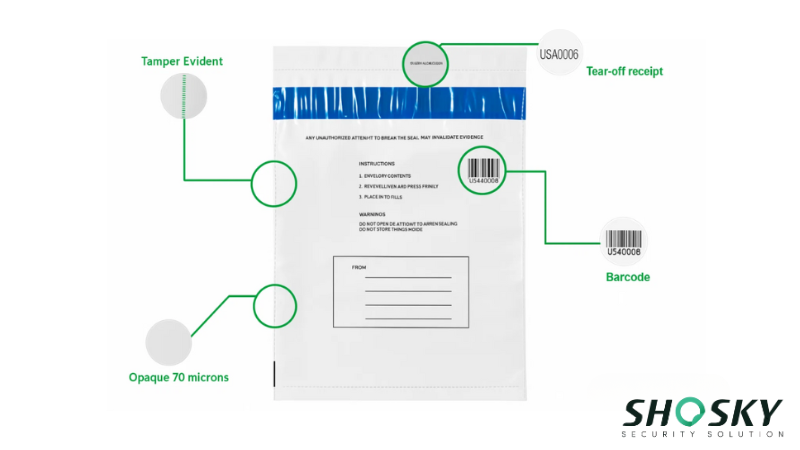
A tamper-evident bag is a product that makes it immediately visible if someone has tried to open it. These bags use special seal types that reveal signs of interference. That could be a clear “VOID” message, a broken adhesive strip, or a damaged closure.
With tamper-evident bags, it’s easier to keep items secure, reduce theft, and maintain proper custody records. They don’t just deter tampering; they provide immediate, undeniable proof when someone has attempted unauthorized access.
They’re commonly used in:
- Banks and retail stores for transporting cash and valuable items
- Law enforcement and forensic labs for evidence and sample handling
- Legal offices and courier services moving confidential files
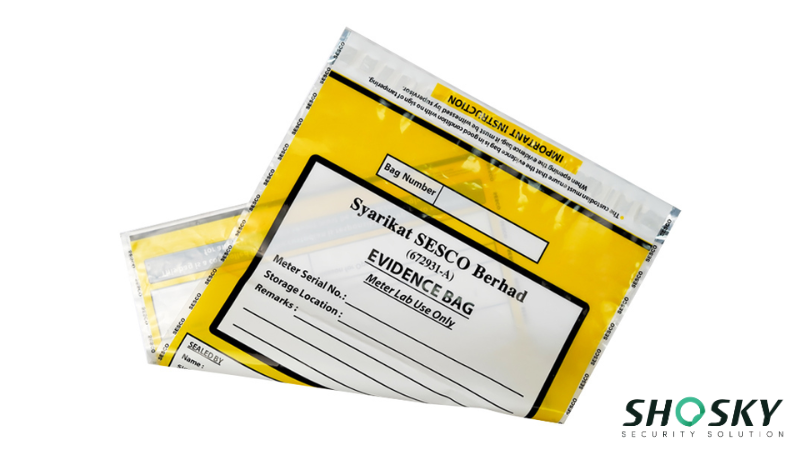
- Healthcare facilities securing medical supplies and patient samples
- E-commerce businesses protecting high-value shipments
Fortune Business Insights suggests that the global tamper-evident packaging market size was valued at USD 2.2 billion in 2023 and is estimated to grow at a CAGR of 8.5% from 2024 to 2032. And this is entirely driven by increasing consumer concerns regarding product safety and integrity.
This massive growth reflects real-world security challenges, and the statistics back up those concerns. That’s why tamper-evident packaging isn’t just a safety add-on; it’s becoming standard practice across industries. Whether you’re moving cash, confidential documents, or medical samples, the right bag helps protect your chain of custody and brand reputation.
What Is a Void Seal Tamper-Evident Bag?
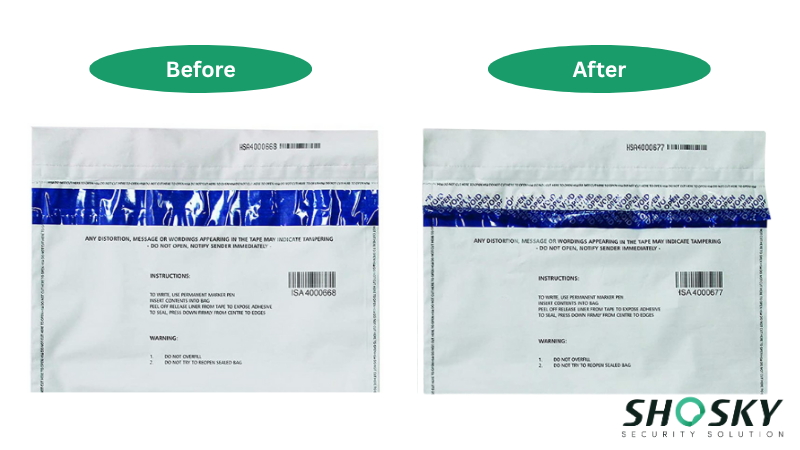
This type of bag comes with a security bag tape that leaves behind a clear VOID message if someone tries to break the seal. Once closed, the bag cannot be resealed without showing obvious signs of tampering. Think of it as a security system that can’t be fooled – once tampered with, there’s permanent proof.
Here are the different types of adhesives used in these bags:
- Acrylic-based adhesives: Bond quickly to various surfaces, including plastics and fabrics
- Universal formulations: Work on challenging materials with low surface energy
- Transfer options: Full transfer (shows on both surfaces), partial transfer (deterrent effect), or non-residue (shows only on the label)
Key Benefits: Immediate tamper detection, strong deterrent effect, legal evidence for claims, and cost-effective security without electronics.
Limitations: Single-use only, sensitive to extreme temperatures, potential adhesive residue, and possible premature activation during rough handling.
What Is a Self-Seal Security Bag?
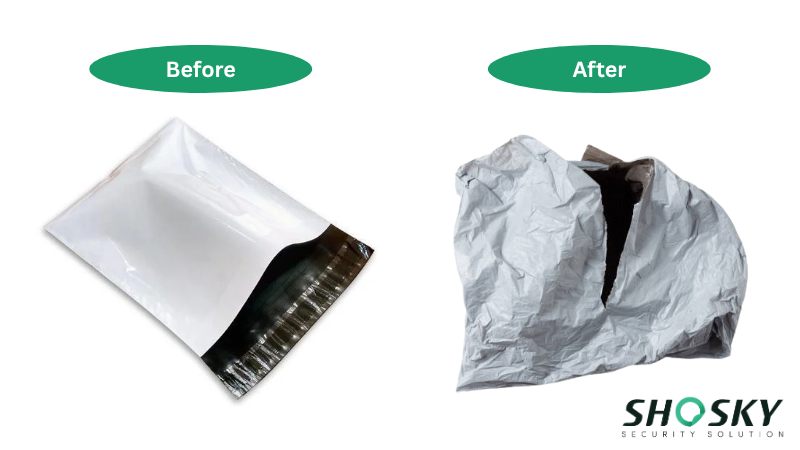
Self-seal bags use a strong adhesive strip that locks once pressed down. These are easy to seal and don’t require extra tools or equipment. They’re often used in fast-moving environments where efficiency matters.
Unlike void seals that leave messages, these bags rely on breaking or damaging the seal itself to show tampering evidence.
How It Works:
The bag comes with an integrated adhesive strip covered by a removable liner. When ready to seal, you simply peel off the protective backing and fold the adhesive closure together.
The adhesive creates a permanent bond that cannot be reopened without visibly damaging the seal. Any attempt to open the bag will tear or break the adhesive strip, providing clear evidence of tampering.
Here are the different types of adhesives and sealing mechanisms used in these bags:
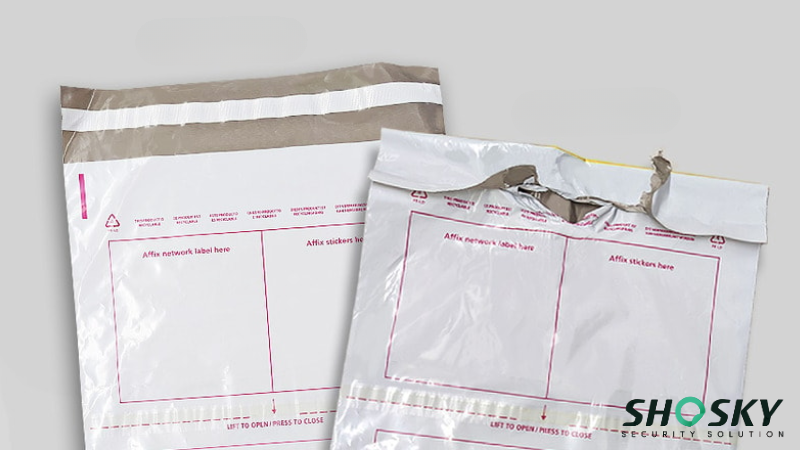
- Pressure-sensitive adhesives: Peel & seal closures that activate under pressure
- Permanent acrylic formulations: Create irreversible bonds once activated
- Sequential numbering systems: Self-sealing bags often include unique alphanumeric numbering and barcodes for tracking
- Multi-indicator systems: Some designs feature four different tamper indicators for enhanced security
Key Benefits: No special storage requirements, clear visual evidence through physical damage, and reliable performance across temperature ranges. Perfect for high-volume operations requiring quick sealing.
Limitations: Less obvious tampering evidence compared to void patterns, potential for incomplete sealing if not applied properly, and difficulty determining tampering severity from minor seal damage.
Void Seal vs. Self-Seal Bags – Side-by-Side Comparison
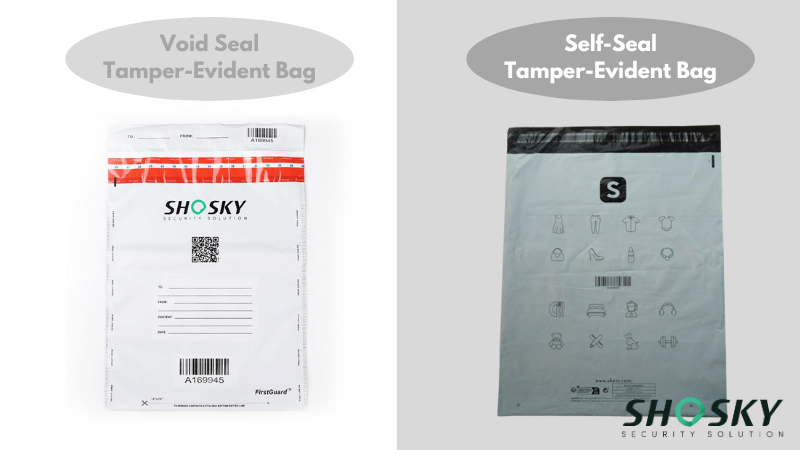
Now that we’ve broken down how each type works, it’s easier to compare them based on core features. This helps you figure out which product matches your day-to-day needs, whether you’re transporting cash, storing sensitive items, or looking to upgrade your current tamper-evident system.
Here’s a quick table that compares both sealing types:
| Feature/Criteria | Void Seal Bag | Self-Seal Bag |
|---|---|---|
| Tamper Visibility | Very high – reveals VOID message | Moderate – shows seal damage only |
| Ease of Use | Takes a few more steps | Easy peel-and-seal setup |
| Security Level | Excellent for critical content | Good for general use, like cash handling |
| Climate Resistance | May be affected by extreme temperatures | More durable in various conditions |
| Customization | Barcodes, logos, and serials are available | The same features are usually in stock |
| Best For | Legal, forensic, long-term document storage | Retail, banking, pharmacy, and fast workflows |
As you can see, both offer solid protection but excel in different ways. If you need a strong visual alert and work in a strict regulatory setting, go with the void seal tamper-evident bag. If you’re more focused on speed and ease in a high-volume setup, the self-seal option may suit you better.
Security Enhancements You Can Add to Either Type
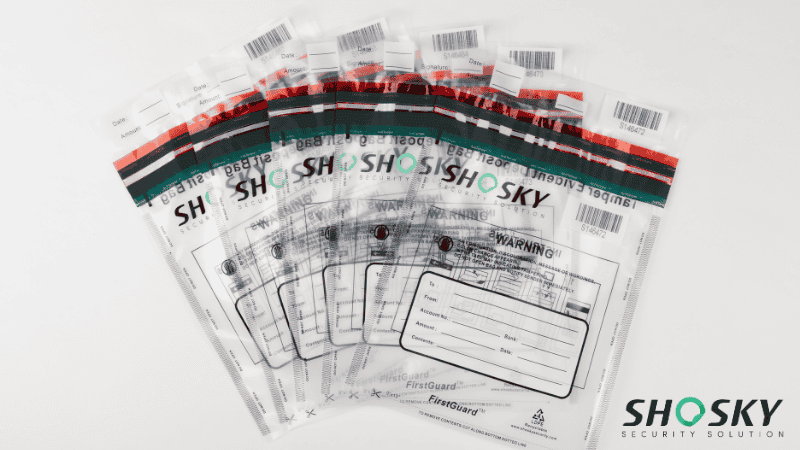
To make tamper-evident bags even more secure, there are added features you can include when placing your order. Many suppliers offer options to enhance the bag’s security and traceability. Some upgrades include:
Barcodes, QR Codes, and RFID Integration
Adding barcodes or QR codes is one of the simplest ways to improve traceability. These codes connect each bag to a digital system, creating a clear chain of custody. When scanned, the code can show when the bag was packed, who handled it, and where it’s headed next.
This causes it to be harder for anything to go missing without being noticed. If there’s a delay or issue during transit, these records can quickly help find where things went wrong. It’s also useful for internal audits, especially in banking, healthcare, or retail.
For larger operations, RFID tags are a smart upgrade. They allow contactless scanning, even when packets are stacked or in sealed containers. This speeds up processing and reduces human error, while still logging every bag’s movement.
Custom Printing with Serial Numbers and Company Logos
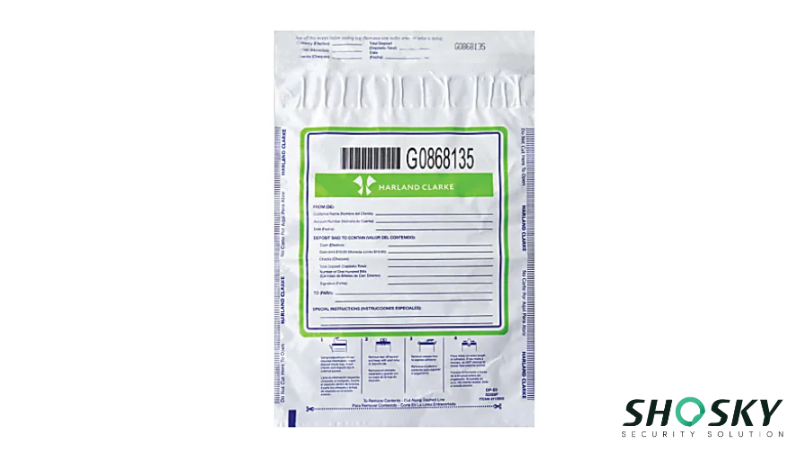
Serial numbers give each packet a one-of-a-kind ID. That means no two packets are alike, which makes it easier to spot if someone tries to swap or tamper with a package. It’s a practical tool for both internal tracking and customer reassurance.
You can also use these serial numbers to match physical logs with digital systems. If a customer or partner asks for proof of delivery or proper handling, the matching numbers can quickly confirm the details.
Printing your company’s logo or name on the packets can also deter theft. It clearly marks the packet as yours, so if it goes missing or is found outside normal channels, it’s easier to trace. Branded packaging also helps your process look more organized and professional.
UV Printing or Watermarks for Counterfeit Deterrence
UV printing is one of the most effective ways to stop counterfeits. It adds invisible details onto the bag’s surface – markings that can only be seen under ultraviolet light. To the naked eye, the packets look plain, but under a UV lamp, these hidden elements show up instantly.
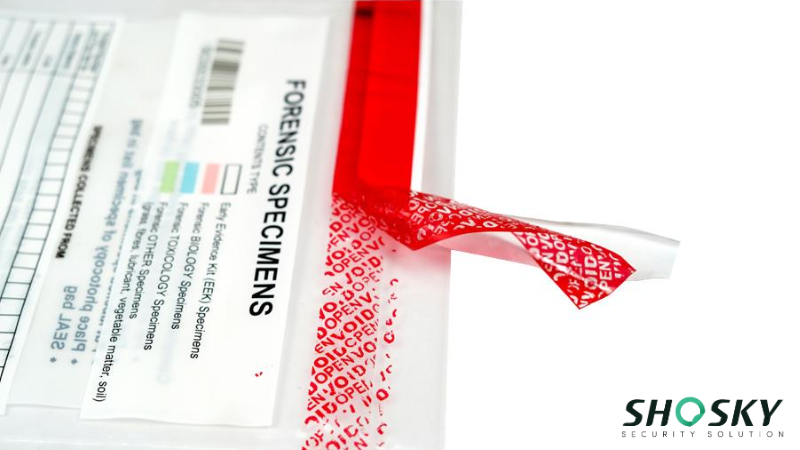
It’s a smart option for businesses dealing with cash, sensitive paperwork, or confidential materials. If a fake bag gets into circulation, the lack of UV detail is a clear red flag. Checks can be done quickly, without opening the packets or slowing down the process.
Watermarks are another trusted option. These are built right into the material and can’t be peeled off or covered without damage. They’re easy to verify by touch or light inspection.
So, they are a good choice for companies that need to detect fakes without expensive scanning equipment.
How to Choose the Right Tamper-Evident Seal for Your Application
There’s no single seal that works for every application. The best choice depends on what you’re protecting, how it’s being handled, and how long it takes to stay secure. Here are a few factors you should consider to choose the right tamper-evident seal for your application:
Factor 1: Type of Contents
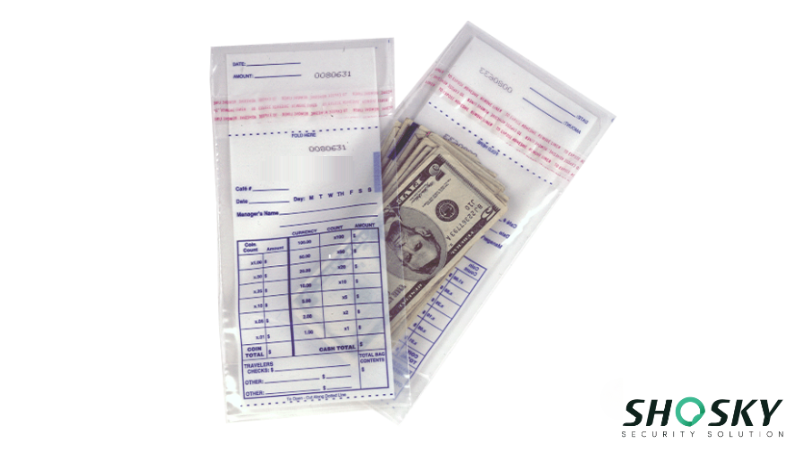
Start by thinking about what’s going on inside the packets. Cash, legal papers, patient records, medication, or lab samples all come with different levels of risk.
For example, banking usually calls for numbered or barcode-tracked seals. Hospitals might require tamper-evident bags with clear labeling and high visibility. If you’re sending sensitive items, a higher-security seal is always worth considering.
Factor 2: Handling and Movement
The more people who touch the bag, the more security it requires. If it’s passed between teams, scanned multiple times, or stored temporarily in shared spaces, a seal with visible tamper technologies is a smart pick.
On the other hand, if speed matters most, like in retail or fast logistics, simple pull-tight or self-seal packets can keep things moving without sacrificing control.
Factor 3: Seal Duration
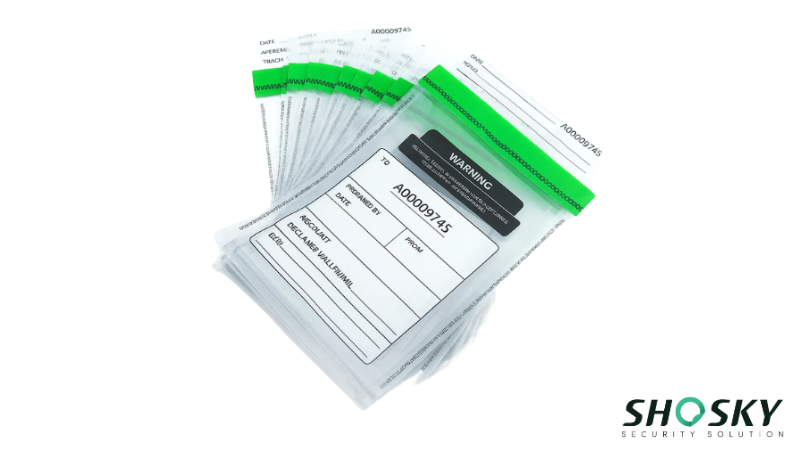
Some adhesive strips are constructed for short-term use: just enough to get an item from point A to point B. Others are built to hold up for longer stretches, even overnight or in transit across cities or regions.
If your packets stay sealed for hours, basic adhesive or locking options might be fine. But if they’re left unattended or moved through different locations, go with stronger seals that show any sign of tampering clearly and can’t be reclosed without detection.
FAQs
Can self-seal bags be reused?
No. These are designed to be single-use. Trying to reuse them weakens the seal and breaks the secure closure.
How do I know if a bag has been tampered with?
Look for faded color, loose adhesive, misaligned labels, or changes in the seal. VOID messages or broken closures are key signals. Contact us for more details.
What packaging is tamper-proof?
No bag is 100% tamper-proof, but with the right seal, design, and product material, you can make tampering obvious and risky for bad actors.
Conclusion
Both void seal and self-seal tamper-evident bags have their place, depending on the use case. Void seals provide strong visual cues for tampering, while self-seals are quicker for high-volume tasks. Think about the item’s value, chain of custody, and who’s handling it. The right choice won’t just stop theft – it’ll make your entire process more reliable and accountable.
Protect What Matters with Shosky Security Tamper-Evident Bags
Whether you’re a small business or a large institution, Shosky Security has durable tamper-evident bags to match your security goals. Our bags are tested, proven, and customizable – ideal for keeping sensitive items safe in transit. Contact us today, and make tampering obvious from the first mile to the last step.
